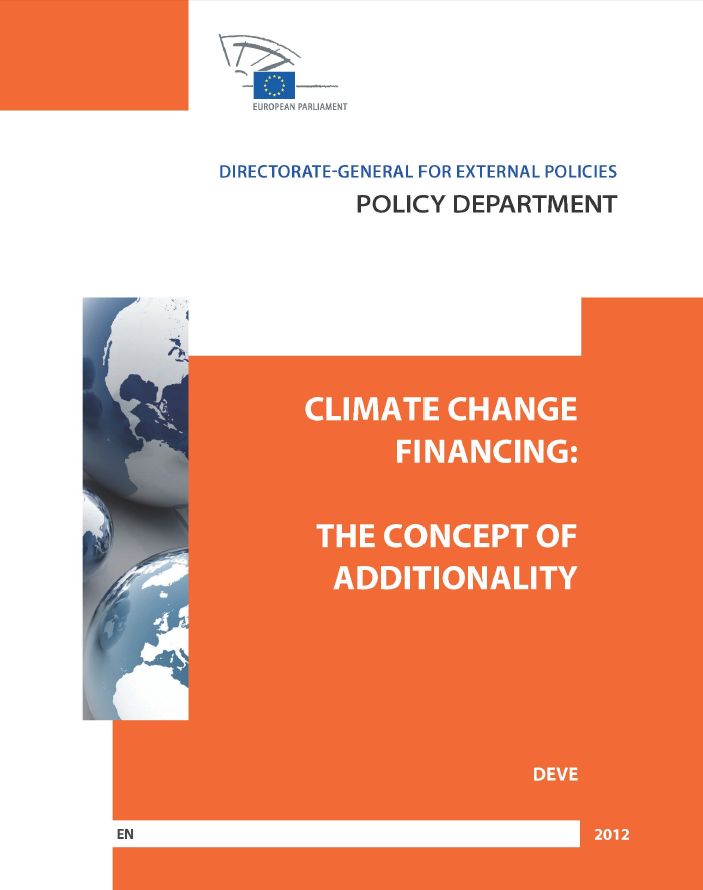Climate Change Financing – Study for the European Parliament
The concept of additionality in the light of the commission proposal for a Development Cooperation Instrument (DCI) for 2014-2020
- Publication
- Citation
Knoke, Irene and Matthias Duwe 2012: Climate Change Financing: The Concept of Additionality in the Light of the Commission Proposal for a Development Cooperation Instrument (DCI) for 2014-2020, Brussels.
Industrialized countries have committed themselves to providing USD 100 billion of "new and additional" financing annually by the year 2020 to support developing countries in their efforts to mitigate climate change and adapt to its effects. But what does "new and additional" mean? Where do development projects end and where do climate change measures start? These questions are tackled by Irene Knoke (Südwind Institute) in a study for the European Parliament. Matthias Duwe (Ecologic Institute) provided his expert opinion in a peer review of the paper. The study is available for download.
Exactly what "new and additional" means, has not been clearly defined by the relevant international actors in the context of climate finance. Without such a definition, compliance with the "new and additional" criterion could have some unintended side-effect. Due to the considerable overlap between climate change and development activities, one of the risks is a shift of focus and resources towards climate change but away from traditional development objectives and partners - at both the sectoral and geographic level. This is especially true regarding adaptation measures, where it is unclear where development activities end and climate adaptation begins.
In this study, Climate change financing: The concept of additionality in the light of the commission’s proposal for a development cooperation instrument (DCI) for 2014-2020 [pdf, 750 kB, English], researchers from Südwind Institut, with support from Ecologic Institute, define how additionality works in practice and attempt to determine how it can best be measured in order to minimize the above mentioned risk.
The European Commission has already taken some steps to define additionality within the EU by 2013 but these have not yet been successful. Part of the reason is that finding a baseline against which to measure additionality is a highly political question, subject to factors such as budget constraints and political reluctance. Member States, for example, have been cautious to identify an ambitious common definition partly because it could lead to lower compliance with their commitments. This could put them at a disadvantage at the global level, where climate finance is evaluated focusing more on the transparency and disbursement of ODA funds.
Despite these difficulties, the study makes the case for the importance of agreeing on the definition of additionality and integrating it into climate finance activities to bolster their effectiveness and transparency within the context of development cooperation. It recommends that the EU devise a stringent but effective common approach internally as a proposal for debate at the UN level. The definition should build on the twelve-point action plan to raise ODA levels to 0.7% of GNI by 2015. This move might result in a temporary disadvantage for EU Member States against other developed partners. Yet, the level of ambition and the increased transparency could also garner the support of developing countries. These might in turn pressure other developed countries to follow suit.




